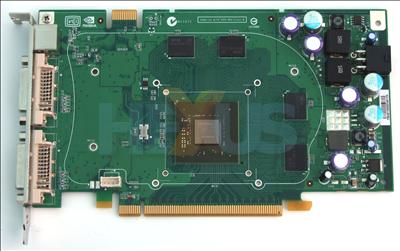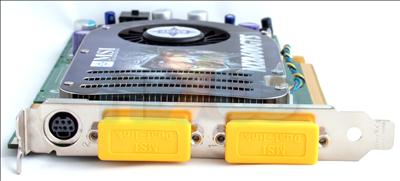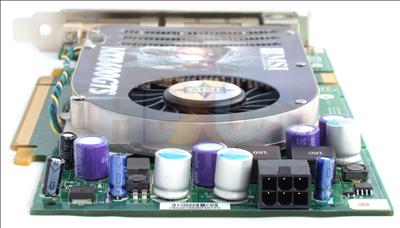Card Appearance
So here we have the card that we shall be using to evaluate the GeForce 8600GTS today, MSI's awkwardly-named NX8600GTS-T2D256E-HD-OC.
So awkwardly-named that from now on it shall be referred to simply as the NX8600GTS.
Unsurprisingly for a launch-day part MSI has chosen not to deviate from NVIDIA's reference PCB and cooler, although it has added a picture of a man with a shiny helmet.
The cooler itself is a bit of a disappointment, with the fan motor proving noisier than we would like; not just under load but at idle as well.
Whether this is simply a manufacturing defect with this particular sample or indicative of all cards is impossible to tell at this point, but we certainly hope it's the former.
On a more pleasant note MSI has also chosen to push the card's clock speeds up to 720MHz core and 2200MHz memory, a ~7 and 10% increase. respectively, over NVIDIA's stated stock speeds.
Removing the cooler reveals the GPU along with the four GDDR3 memory chips. Unlike the G80 core, as used by the 8800-series, there is no separate NVIO chip present, with the functionality built into the GPU itself (as mentioned on the previous page).
A single SLI 'golden finger' is present at the top of the board to facilitate multi-GPU operation. You'll know that as SLI.
MSI has chosen not to outfit the NX8600GTS with any HDMI outputs. Rather, it has opted for a pair of DVI-I outputs and a 7-pin video-out providing S-Video, component and composite outputs.
As is standard on all 8600GTS cards, both DVI-I outputs support HDCP for playback of high-definition content to a protected display as well dual-link DVI support.
The GeForce 8600GTS core runs hot enough to require auxillary power.
Summary
The biggest disappointment, based on first impressions, has to be the noise of the cooler. With the G84-based chip providing a strong range of improvements in video decompression and image output it would, at first glance, seem an ideal candidate for an HTPC, yet not many people will be willing to tolerate the fan motor's noise in a lounge environment.













